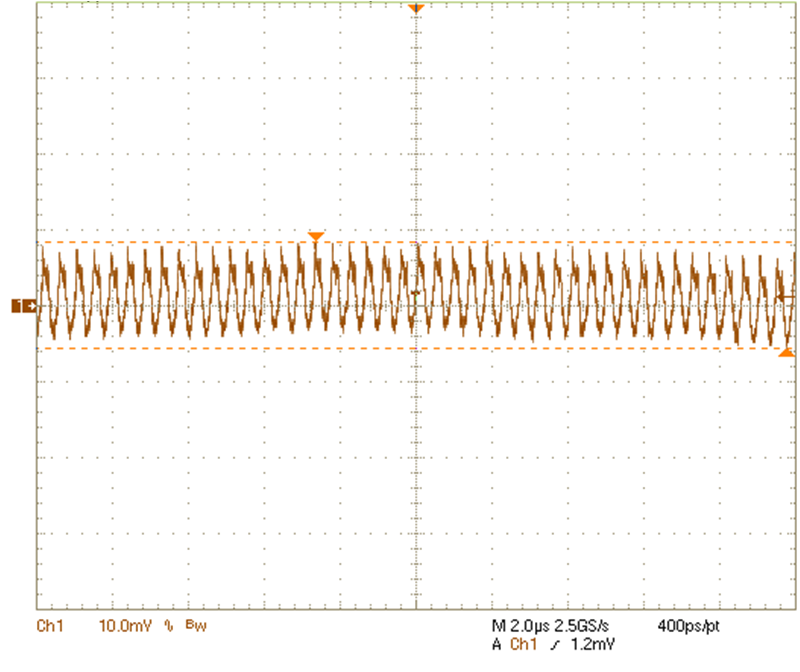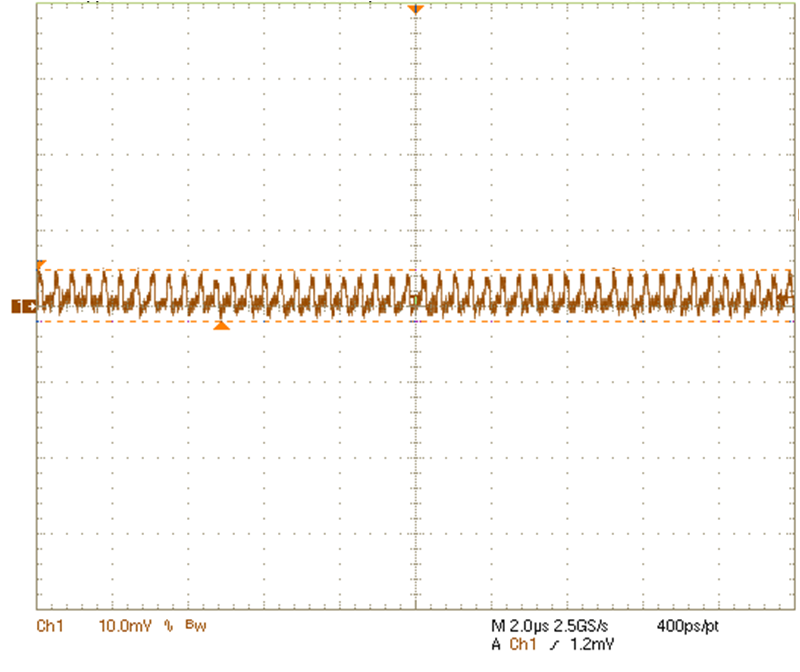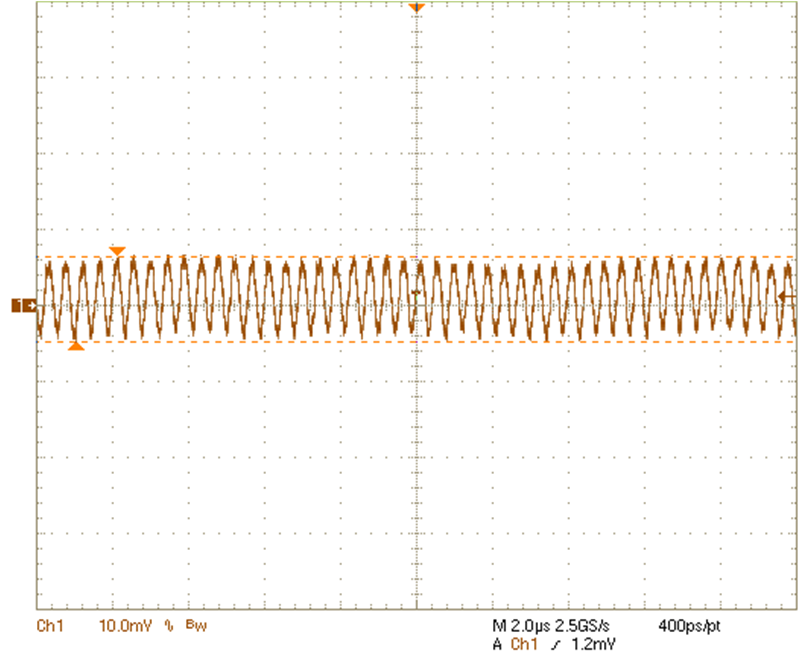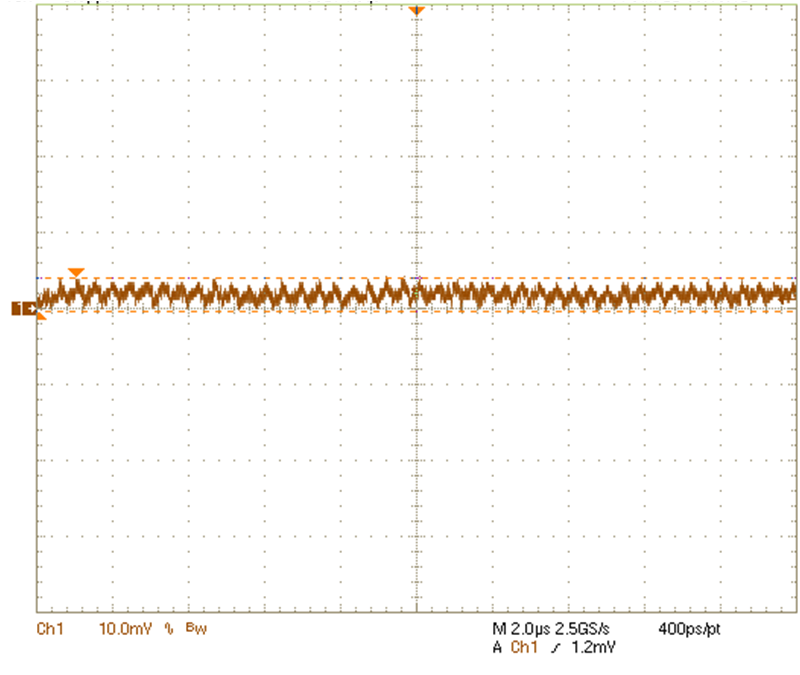TIDUF06 August 2022
- Description
- Resources
- Features
- Applications
- 5
- 1System Description
- 2System Overview
- 3Hardware, Testing Requirements, and Test Results
- 4Design Files
- 5Related Documentation
- 6Trademarks
3.2.2.2 Power Supply Output Voltage Ripple
To achieve a quality output video stream, the output voltage ripple on the IMX623 and DS90UB953-Q1 supplies must be low so that it does not affect the integrity of the high-speed CSI-2 data and internal PLL clocks. Figure 3-5 to Figure 3-8 show the measurements for 3.8-V, 1.8-V, 1.1-V, and 3.3-V rails while the camera is streaming video. The measured peak-to-peak ripple voltages are 0.4%, 0.6%, 0.6%, and 0.1% respectively. The tight voltage accuracy allows for the video output to be successfully transmitted.
 Figure 3-5 Output Voltage Ripple: 3.8 V
Figure 3-5 Output Voltage Ripple: 3.8 V Figure 3-7 Output Voltage Ripple: 1.1 V
Figure 3-7 Output Voltage Ripple: 1.1 V Figure 3-6 Output Voltage Ripple: 1.8 V
Figure 3-6 Output Voltage Ripple: 1.8 V Figure 3-8 Output Voltage Ripple: 3.3 V
Figure 3-8 Output Voltage Ripple: 3.3 V